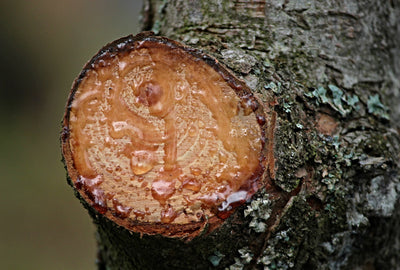Cotton is one of the world's oldest cultivated plants and a very popular natural fibre. It belongs to the mallow family. The cotton yarn is made from the fibres. The length affects how fine the fabric is. In this blog you can read everything you need to know about the production, the properties, care, the various products, how you can wash and process cotton fabrics and much more.
What is cotton, and what are its properties?
The natural fibre consists of around 90 percent cellulose. The latter is obtained from the fruit capsules of the plant. Thanks to its special structure and properties, the fibre has been cultivated and used for several thousand years, and most often for the production of a wide variety of textiles and other products. Advantage are:
- softness
- skin tolerance
- breathability
- moisture absorption
- absorbency
- Pleasant wearing comfort
- High tear resistance
- robustness
- ease of care
- longevity
The plant can be used in pure or mixed forms. The fibre is permeable to air and very absorbent. It emits excess heat to the outside very well. The natural fibre has a very high water absorption capacity. Cotton fabrics feel natural and comfortable. The allergy potential is low. The fabrics are easy to dye and durable. A disadvantage is that some types of cotton tend to crease easily. The natural fibre is therefore often mixed with polyester or other fibres. The fabric is very absorbent, which means that it takes longer to dry.
The history of cotton - where is it grown?

Various yarns have a millennia-old history. This includes the natural fibre, which is one of the oldest cultivated plants, was one of the world's first luxury goods and was traded at high prices. It is now the most widespread textile. The beginnings of cultivation date back to 6,000 BC, with the oldest evidence coming from India, Arabia, Egypt and Syria. Later, the natural fibre spread to Europe. Today it is grown in huge plantations on every continent, with most found in areas with warmer climates. The cotton plants prefer sunlight. In 1764 a mechanical loom was invented and in 1793 a ginning machine followed. Both made production and processing much easier. In 1920 harvesting machines ensured that they no longer had to be laboriously picked by hand. With the expansion of trade routes, larger and larger quantities became available.
Where and how is cotton grown?
Producers of the natural fibre are for example:
- India
- China
- USA
- Mexico
- Egypt
- Brazil
- Pakistan
- Türkiye
The plant is usually cultivated as an annual. It takes several months to harvest. The fibres, which grow in capsules, are harvested for production, cleaned, cored and sorted by length. Yarns of various qualities are produced in the spinning mills. Different substances are produced from it. Only long fibres are used in the production of textiles. Industry uses shorter ones to obtain cellulose.
What types of cotton are there?

What is Pima Cotton?
There are many different types, such as Egyptian cotton and Pima cotton , depending on the weave of the cotton threads and the manufacturing process . Both are known for the softness. The former is often used for fine bed linen. The latter is one of the finest and longest cotton fibres. High-quality T-shirts are often made from it. It is soft, robust and the colours on the products made from it, which feel extremely pleasant and soft on the skin, stay beautiful for longer. The matt sheen is also typical.
What is Supima Cotton?
Brands using Pima cotton may use the "Supima" designation. The label is awarded by the organization Supima. To obtain it, the Pima cotton grown must be 100% pure. Supima cotton is the best in the world. Compared to conventional fabric, it is twice as strong and therefore more tear-resistant, while maintaining its softness. Supima inspires with the highest wearing comfort.
What is mercerized cotton?
When mercerizing, the fibres are shortened. Highly concentrated caustic soda is used for this. The fibres swell up in it. The surface becomes larger and appears smoother. Mercerized cotton yarns are refined. The fabrics get a silky sheen and touch. Some properties, such as strength, elasticity, tear resistance and colouring options are improved. The process is very expensive and is only used for high-quality textiles. The skin feels very soft and pleasant.
What is organic cotton?
Although cotton is a purely natural fibre, many different chemicals and pesticides are used in further processing. To avoid this, various manufacturers offer organic cotton, which is well suited for allergy sufferers. Compared to conventional cultivation, water and energy consumption are also significantly lower. The same applies to CO2 emissions.
Lack of sustainability has many consequences:
- High energy loss and water consumption
- Soil and groundwater are polluted
- Herbicides and fungicides promote species extinction
When growing organic cotton, which has short to medium fibre lengths and is organically grown, fertilizers and pesticides are natural and water consumption is reduced. The use of chemical pesticides and fertilizers is prohibited. Organic cotton uses around 89 percent less water and 60 percent less energy than conventional cotton. It is best to use certified organic cotton, for example from GOTS. The organic label therefore does not refer to the type of cotton, but to the cultivation.
Improve sustainability
An important step towards more sustainability is alternative irrigation. The cotton plants can now also be supplied by rain or with the help of neighbouring lakes and rivers. Another sustainability plus of the SUPIMA plant is the diverse use. Not only is the fibre used, but cottonseed oil, husk feed and stalk bedding are also used.
Viscose and cotton - what's the difference?
The two materials have many similar properties, such as softness, because they are made of cellulose. However, the key difference is that cotton is a natural fibre while viscose is a semisynthetic fibre. Strength decreases when wet. The opposite occurs with cotton fibre. It takes a few months to grow the cellulose in cotton, while it takes years to make viscose. The trees undergo chemical processing to remove the unneeded parts during production.
What is made from cotton?

The largest area of application is in the textile industry. Around 40 percent of the clothing consists of the natural product. Various fabrics are produced from the yarns, for example:
- Clothing, such as shirts, jeans and underwear
- bedding
- towels
- handkerchiefs
- home decoration
- canvases
- fishing nets
- tarps and tents
- Medical area for dressing material
However, the use is much more diverse. For example, there is also cottonseed oil, which is a by-product and is used in cosmetics, among other things. Paper, for example, is made from the short cotton fibres .
What is there to consider when buying cotton products?
Pay attention to the material from which the product is made, the quality of the fabric and the country of origin. Don't neglect sustainability. Because of possible harmful substances, you should choose products with an Oeko-Tex certification and/or use organic cotton.
How do you wash, dry and iron cotton fabrics?
Cotton fabrics are very easy to care for. You can machine wash pure white or light cotton clothing at up to 60 degrees. You should wash dark and coloured textiles separately and at a maximum of 30 to 40 degrees. Turning them inside out first protects the colours. The best way to dry cotton clothing is to hang it on a line or hang it on a hanger. Check the label to see if you can also use a dryer. When ironing, pay attention to a maximum temperature of 200 degrees. For stronger wrinkles, you can work with some steam. However, follow the instructions on the care label. So that cotton fabrics do not crease so badly, it is best to spin them at a maximum of 1,000 revolutions.
How can cotton be processed?

The material is very easy to work with. You can use our Mr Beam laser cutter for cutting, for example, and sew a lot from the natural product, for example:
- pillowcases
- curtains
- Clothing
There are hardly any limits to your imagination. Use a sew-all thread and, depending on the thickness of the fabric, a 70 to 80 mm needle. It is important to overcast cotton fabrics because the open edges can fray. You should also wash them before sewing. This prevents the finished textiles from shrinking.
How are cotton products properly disposed of?
It is important to dispose of cotton products properly so that they can be reused or recycled. You can repurpose old clothes into other items of daily use. Otherwise, it does not belong in the household waste, but in the old clothes' container. An exception is heavily soiled clothing, for example with oil stains. Disposal in the used clothing container is free of charge.
Conclusion on cotton

Cotton is a natural product from the cotton plant. The material is robust, tear-resistant, soft, pleasant on the skin, does not scratch and convinces with a long service life. The easy-care natural fibre has now become the most popular textile in the world. Whether for clothing, bed linen, towels, home textiles or hygiene items, the fabric is multifunctional and an integral part of everyday life. Popular types of cotton are Pima, Supima and organic cotton, ideally GOTS-certified. The former score with exceptional quality and organic fabrics with sustainable cultivation, since, in contrast to conventional cotton cultivation, no chemical pesticides and fertilizers may be used.
Did you like the article in our material guide ? Then be sure to subscribe to our newsletter, so you don't miss any more articles. Find out more about other materials such as thermal wood, artificial leather, cardboard or foam.



